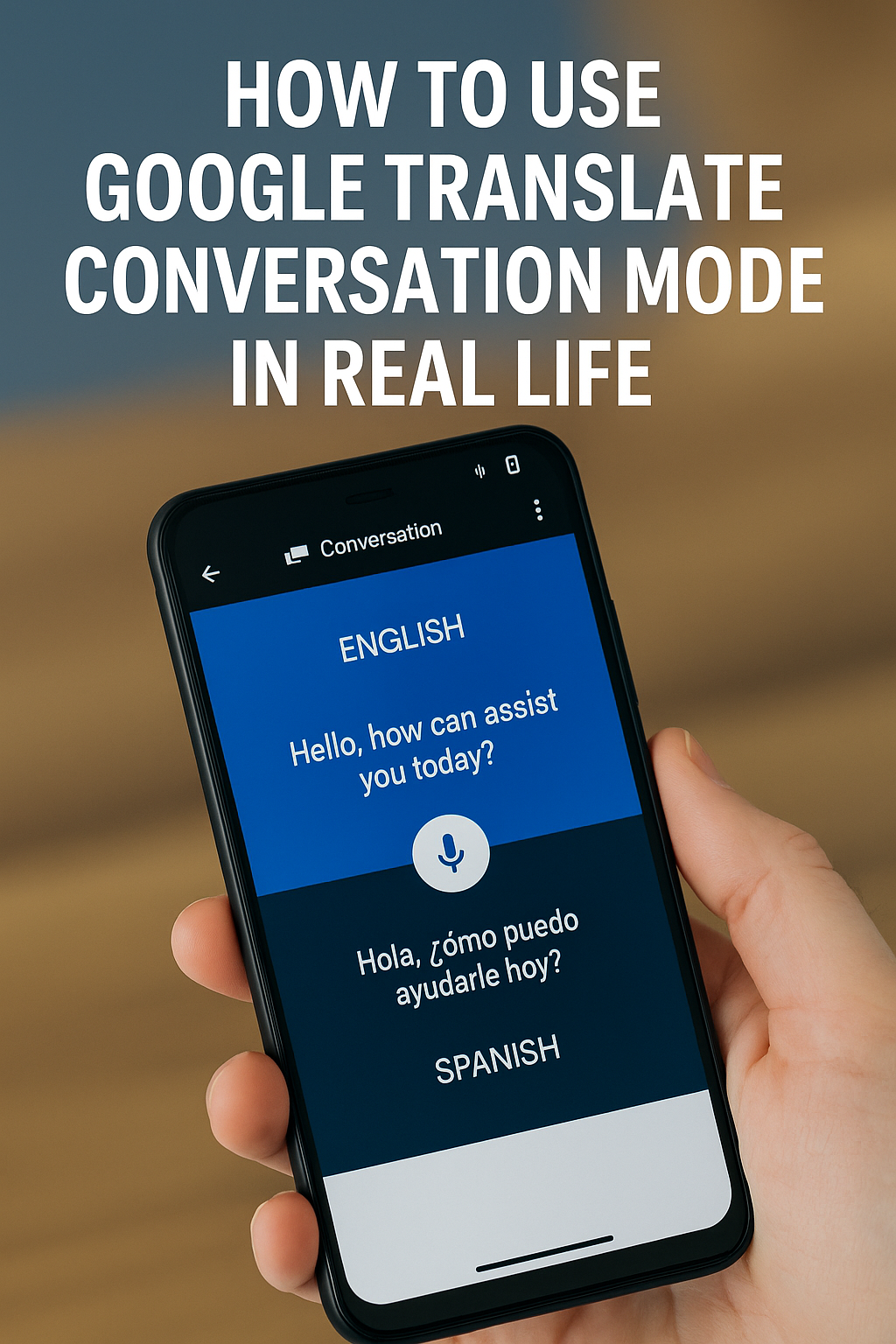For many hearing aid users, following conversations in real time can be challenging—especially in noisy environments, with fast talkers, or when different accents come into play. Add a language barrier, and things get even more complicated.
That’s where Google Translate’s Conversation Mode shines. This feature not only translates spoken language instantly, but also shows the translation as text on your phone. For people with hearing loss, this means you don’t just rely on hearing the translation—you can read it too, just like captions.
What Is Conversation Mode?
Conversation Mode is a feature in the Google Translate app that allows two people to communicate in real time, even if they speak different languages.
Instead of translating one phrase at a time, the app listens to both speakers, translates the conversation, and displays it as text. This gives hearing aid wearers two layers of support:
- Spoken translation (you can hear it)
- On-screen captions (you can read it)
👉 Download Google Translate (Android)
👉 Download Google Translate (iOS)
How to Turn On Conversation Mode
- Open the Google Translate app on your smartphone.
- Tap “Conversation” at the bottom of the screen.
- Choose both languages (for example, English ↔ Spanish).
- Tap the microphone and begin speaking.
- The app will translate your speech into text and audio.
- The other person responds, and their words are translated back to you.
💡 Tip for hearing aid users: Keep your phone screen visible so you can read along like captions while listening. This reduces the chance of missing details.
Real-Life Situations for Hearing Aid Users
Here’s how hearing aid users can benefit in everyday life:
- Doctor’s visits abroad – You can read the translated text in case background noise makes speech hard to hear.
- Traveling – Order food at a restaurant confidently without worrying about mishearing.
- Family gatherings with bilingual relatives – Stay engaged in conversations instead of feeling left out.
- Business meetings – Avoid missing key details when colleagues speak quickly or softly.
🔗 Related: Complete Guide to Captions & Subtitles for Hearing Aid Users
Tips for Best Results
- Pair with your hearing aids. If your aids are Bluetooth-enabled, connect your phone so you can hear the spoken translation directly.
- Rely on text. If you struggle to hear in noisy spaces, focus on the on-screen captions.
- Download languages offline. Helpful if you’re traveling without stable internet.
- Use manual mode if auto-detection gets confused—tap your mic, then let the other person tap theirs.
- Position the phone between you. This way, both parties can see the text while talking.
Comparison: Best Translation Apps for Hearing Aid Users
Here’s how Google Translate Conversation Mode stacks up against other live translation tools:
| Feature | Google Translate | Microsoft Translator | iTranslate Converse |
|---|---|---|---|
| Free to Use | ✅ Yes | ✅ Yes | ❌ Paid upgrade |
| Live Conversation Mode | ✅ Yes | ✅ Yes | ✅ Yes |
| Text + Audio Translation | ✅ Both | ✅ Both | ✅ Both |
| Offline Languages | ✅ Yes | ✅ Yes | ❌ No |
| Best for Hearing Aid Users | ✅ Strong text support + captions-like interface | ✅ Works well, group conversation mode | ⚠️ Limited offline, subscription required |
👉 If you’re looking for the most hearing-aid–friendly option, Google Translate is usually the easiest choice because it combines spoken audio + on-screen text and works offline.
Limitations to Keep in Mind
While these tools are powerful, they aren’t perfect. For example:
- Fast talkers or slang can lead to mistranslations.
- Regional accents sometimes confuse the app.
- For critical situations (like medical or legal matters), a professional interpreter is always safer.
Conclusion
For hearing aid users, Google Translate Conversation Mode works like having live captions plus real-time translation in your pocket. It bridges both the language barrier and the hearing barrier—letting you participate in conversations more fully.
Pair it with your hearing aids, keep the text visible, and you’ll find that staying connected across languages is easier than ever.
🔗 Also check out:

